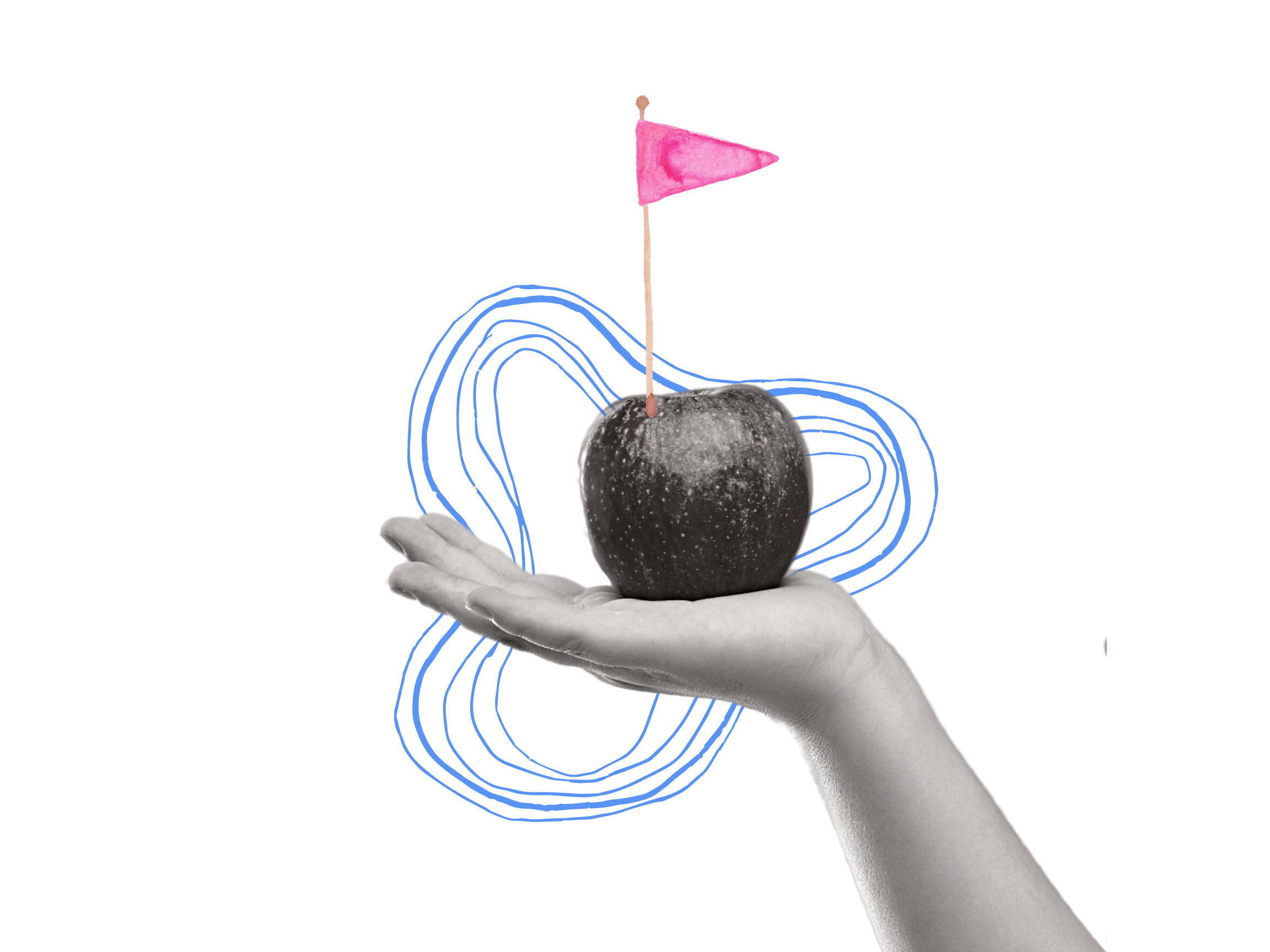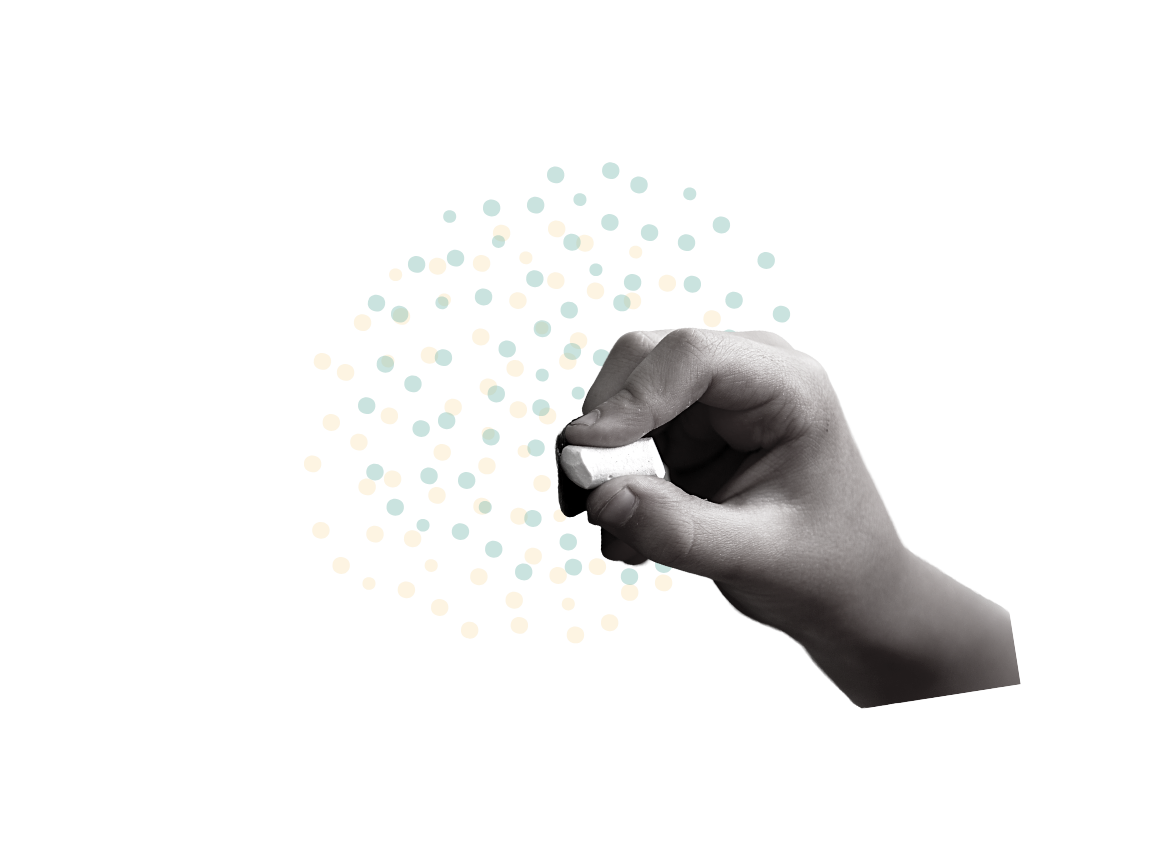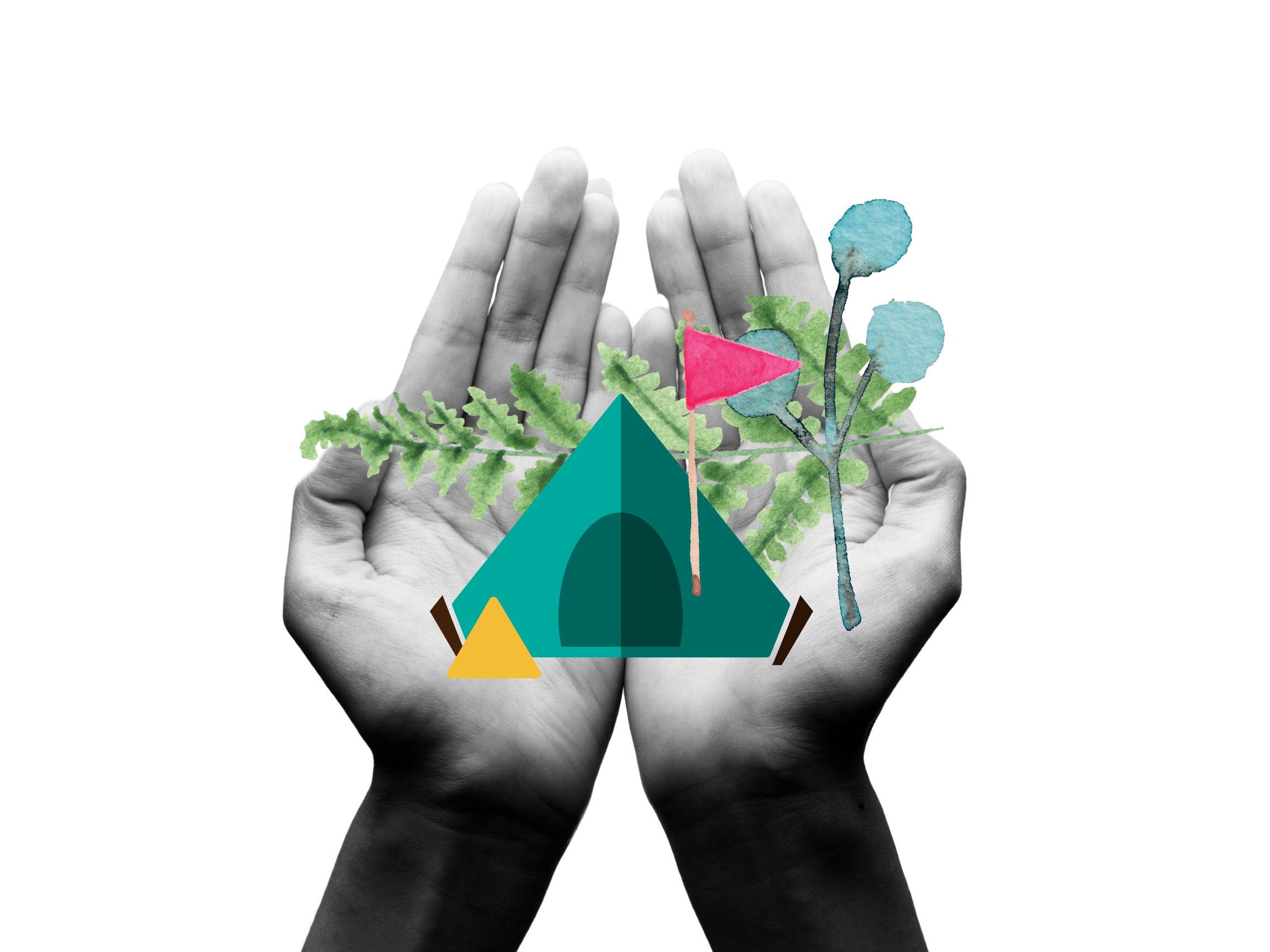
EPISODE THREE
Where does the song of ‘Mountain Goat Mountain’ come from?
While soaking in the glorious sunshine, the adventurers hear a mysterious song that draws them into an underwater cave, where the swim and play amongst the golden seaweed. The episode comes to an end as they discover a secret cavern, full of echoes and sparkling fireflies!
PRE-SHOW PREPARATION
-
Invite students to sit in a circle.
As students settle, use the Mountain Code by asking students around you if they are okay. If they don’t initiate it themselves, invite students to use the Mountain Code to check in with students around them.
Ask students to hold up one hand and place the pointer finger of the other hand at the base of the palm of the hand being held up.
Breathing in, trace a line from the starting point to the tip of the pinkie finger, like climbing a mountain. Breathing out, trace the line back down the finger back to the starting point, like going back down a mountain.
Repeat with the remainder of the fingers and thumb, as the pointer finger traces a track up and down the ‘mountains’ of the fingers and thumb.
Explain to students, they will repeat the mountain breathing, but this time instead of drawing lines on their hands as they breathe in and out, they will use their whole bodies.
Invite students to stand on their spot and stretch up tall as they breathe in and drop down low into a little ball as they breathe out. Work through the process slowly and repeat only a few times to avoid getting dizzy!
-
Invite students to stand in their own space making sure they can see you at the front. Invite students to follow you and move their bodies to be as:
tall as you can, like one of the trees in the rainforest.
small as you can, like a drop of water in the pond.
wide as you can, like a rainforest’s canopy.
thin as you can, like a blade of grass.
diagonal as you can, like a gecko’s leg.
flat as you can, like a rock worn down by water from a waterfall.
Remind students that Mountain Goat Mountain is filled with many different terrains and environments, and that they have already visited a rainforest.
Explain to students that in the next few episodes of ‘Mountain Goat Mountain’ as they continue their journey together, they will be immersing themselves in more of the different environments found on Mountain Goat Mountain.
Invite students to use their bodies either on their spots or through the space to explore how their body:
Walks through a rainforest, navigating rocks and tree roots.
Swims in water in an underground cavern.
Walks across a gnarly branch while trying not to fall in hot lava.
Balances on a tiny rock ledge.
-
Invite students to sit down in a circle.
Ask students if they can remember the signals you used with them at the start of Episode 1 that starts and stops them humming.
As a class, practise starting and stopping humming.
Ask students to put on their costume.
Invite a student to carry the scroll, and another to place the fabric in the middle of the circle in the shape of the pond.
Recap the Mountain Code and responses.
Ask students to list the skills they need as a class to take the next stage of the adventure:
Listening skills
Imaginations
Caring and looking out for each other
Using their own and each other’s superpowers to face challenges
All set to go?
You can begin this episode lying on your backs, around the sheet, which is in the shape of a mirror pool.
You feel the warm sun on your body, as you look up at the Mountain towering above you!
Listen to Episode 3
-
Invite students to sit in a circle and take off their costume.
Ask students to take 30 seconds by themselves to think about what just happened in the classroom?
Ask students to share their thoughts with a partner for about a minute.
Ask students to share their thoughts with the class, inviting opportunities for students to build further discussion from others’ responses.
-
DRAMA & MUSIC: Invite students to sit in a circle.
Clap a sequence for students, asking them to echo back to you the sequence. Repeat the process, increasing the complexity of the sequence to challenge students.
Ask students who can remember what happened to their voices when they were in the cave? (created an echo)
THE ARTS & SCIENCE: Ask students to close their eyes and concentrate on the music score as you replay the section of Episode 2 when you were all under the water. (From 1.45 - 3.20 in Episode 3 audio)
Once you have played the section, ask students:
What type of music they heard.
If they can identify any of the instruments.
How the music contributed to the feeling of being under water and meeting the different creatures.
Composer, Zoë Barry created the music for ‘Mountain Goat Mountain’. Zoë particularly focused on how she could use music to create the atmosphere of each of the different environments you venture through on Mountain Goat Mountain.
Using items around the classroom or from home, invite students individually, in small groups or as a class to create and compose their own underwater music.
Students might also like to create music for the different creatures found under the water like the leaf fish and the moray eel.
While students are composing and/or presenting their music, you might
like to play Zoë’s underwater music to inspire or accompany their work
If students have created their music in small groups, invite each group to play their music to the class accompanied by the recorded text.
Students might like to close their eyes as they listen to each group’s music and text, or they might like to physically engage with the text as the music is played.
Ask students to share their responses after each group presents their work, particularly identifying how effectively the composition created the atmosphere of being under the water.
-
As a class, share what they remember seeing and feeling in the cave, including the fireflies.
DRAMA, SCIENCE AND VISUAL ARTS:
As a class or individually invite students to find images of caves and the animals that live there like fireflies.
Using online video resources such as:
How do fireflies Glow? (an animation)
you might like to take the opportunity to explain to and show students how fireflies glow. Or students might like to use their superpowers to find out for themselves and share their findings with each other.
Take time as a class to enjoy the magical images of the fireflies. If possible, project the images onto a whiteboard or screen and even turn off the lights as if you are actually in the cave! You might even like to string up some fairy lights in the classroom.
Drawing on the Visual Arts content descriptions, you may like to investigate as a class what materials you might use to capture the glow of the fireflies in contrast to the darkness of the cave in an artwork. Students might like to experiment with a variety of materials to create the contrasting effect and then display their works in a class gallery. Invite students to respond to their artworks identifying how effectively the materials were used to create the effect of the fireflies and the cave.
Sustainability is one of the Australian Curriculum’s Cross-Curriculum Priorities.
As emerging artists, students are encouraged to think about how they engage in sustainable practice when selecting and using materials to create their work.
Drawing on this approach of sustainability, guide students as a class or in small groups to create in a cave space (including creatures) in the classroom:
Students are to use recycled materials from the classroom or home.
The space may become a reading nook or a quiet space for students.
POST SHOW RESPONSE
Re-play the section from Episode 3 when the adventurers travel underwater.
Music design by Zoë Barry.
-

Return to Home
-

Curriculum Links
-

Creative Team
-

About Threshold



